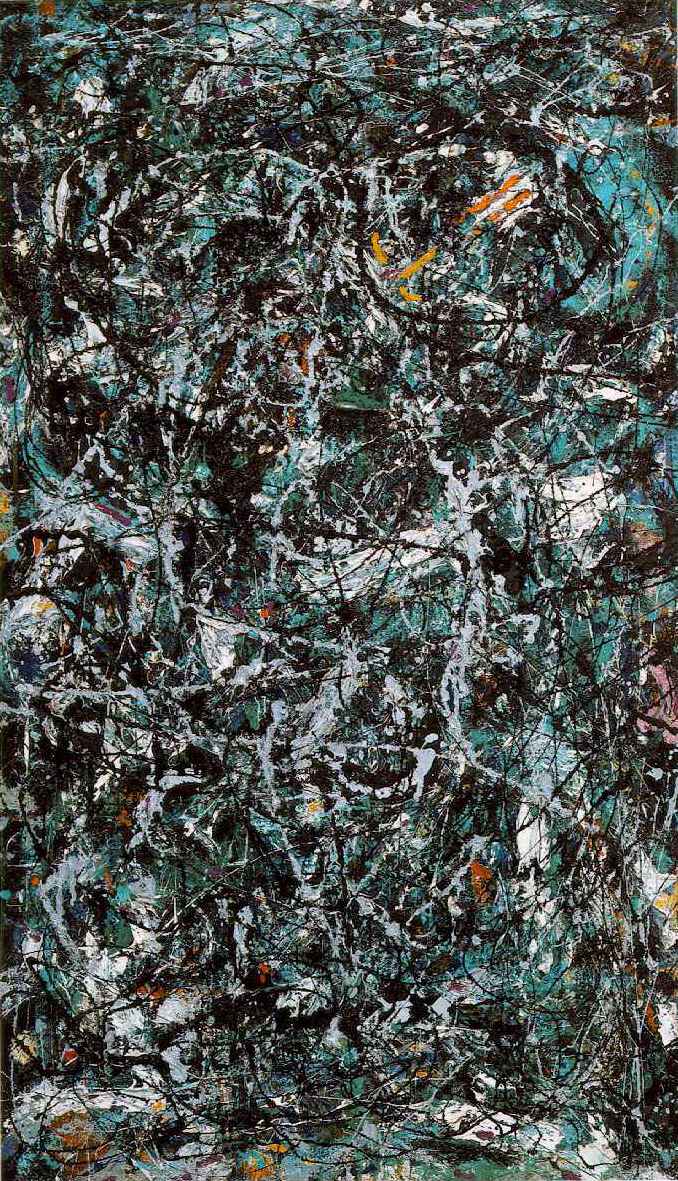Jackson Pollock, Full Fathom Five, 1947
Jackson Pollock (1912-1956) is perhaps the most famous American artist. He is the standard bearer for Abstract Expressionism and has become the modern archetype of the tortured artist. Born in Wyoming and raised in California, Jackson had a difficult childhood and is believed to have started drinking regularly in high school. He moved to New York when he was eighteen to join his older brother at the Art Students League. Both found employment with the WPA, as well as in a number of odd jobs. Pollock's early works were a mix of Surrealism and Cubism and he found great success on the New York art scene. However it wasn't until he abandoned figuration entirely and employed pure abstraction that Pollock found his signature style. Full Fathom Five is one of the earliest masterpieces of the technique that has often been called drip painting. I prefer the term action painting, because the approach included many kinds of paint application, dripping, flinging, pouring directly from the can. Pollock also abandoned easels and spread his large canvases directly on the floor of his barn studio. With the technique he produced such well known masterpieces as Autumn Rhythm and Convergence. Full Fathom Five is a full realization of the style, but perhaps contains more direct referents than many of Pollock's works. The title is much more specific than most of the drip paintings, which are often just known by a number. Taken from Shakespeare's Tempest, the line refers to the deep ocean and a drowned man. We certainly feel this from the painting; the deep greens, rich blues, and dark blacks suggest the sea and its dangers. Pollock, along with most Abstract Expressionists, was also very involved in psychoanalysis, and we can see the depths of the psyche played out on this canvas. If we look at a detail (taken from the area around the orange streaks near the upper right corner) the application of paint becomes visible, which gives greater insight in Pollock's process. This beautiful and intense painting is an exceptional example of Pollock's style and genius, and his ability to communicate great depth of though and feeling within the apparent chaos of his paintings.

This painting is very inspiring to the community it helps me get over my depression in life. IT GIVES ME LIFEEEE. The art is amazing thank you.
ReplyDelete